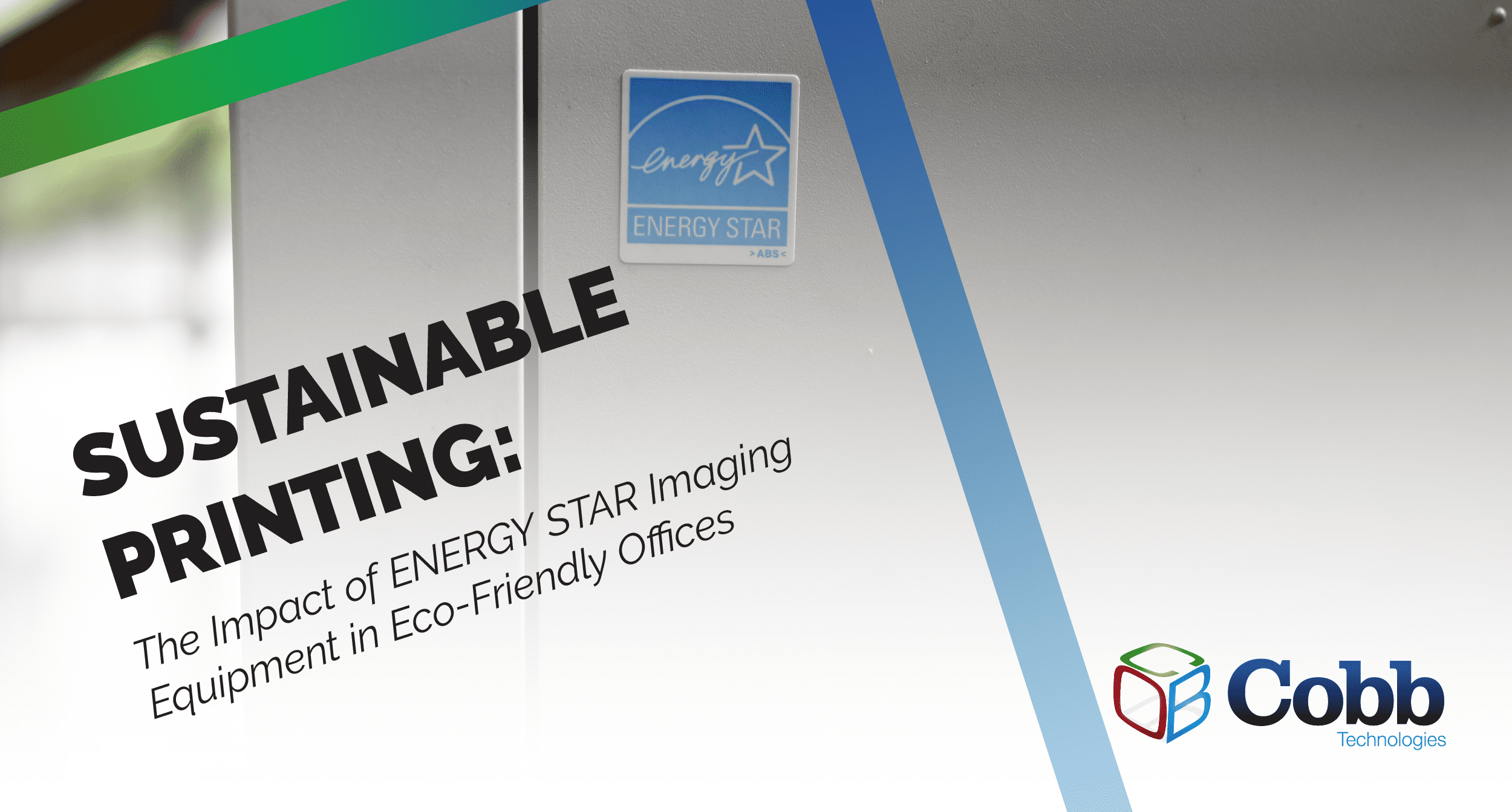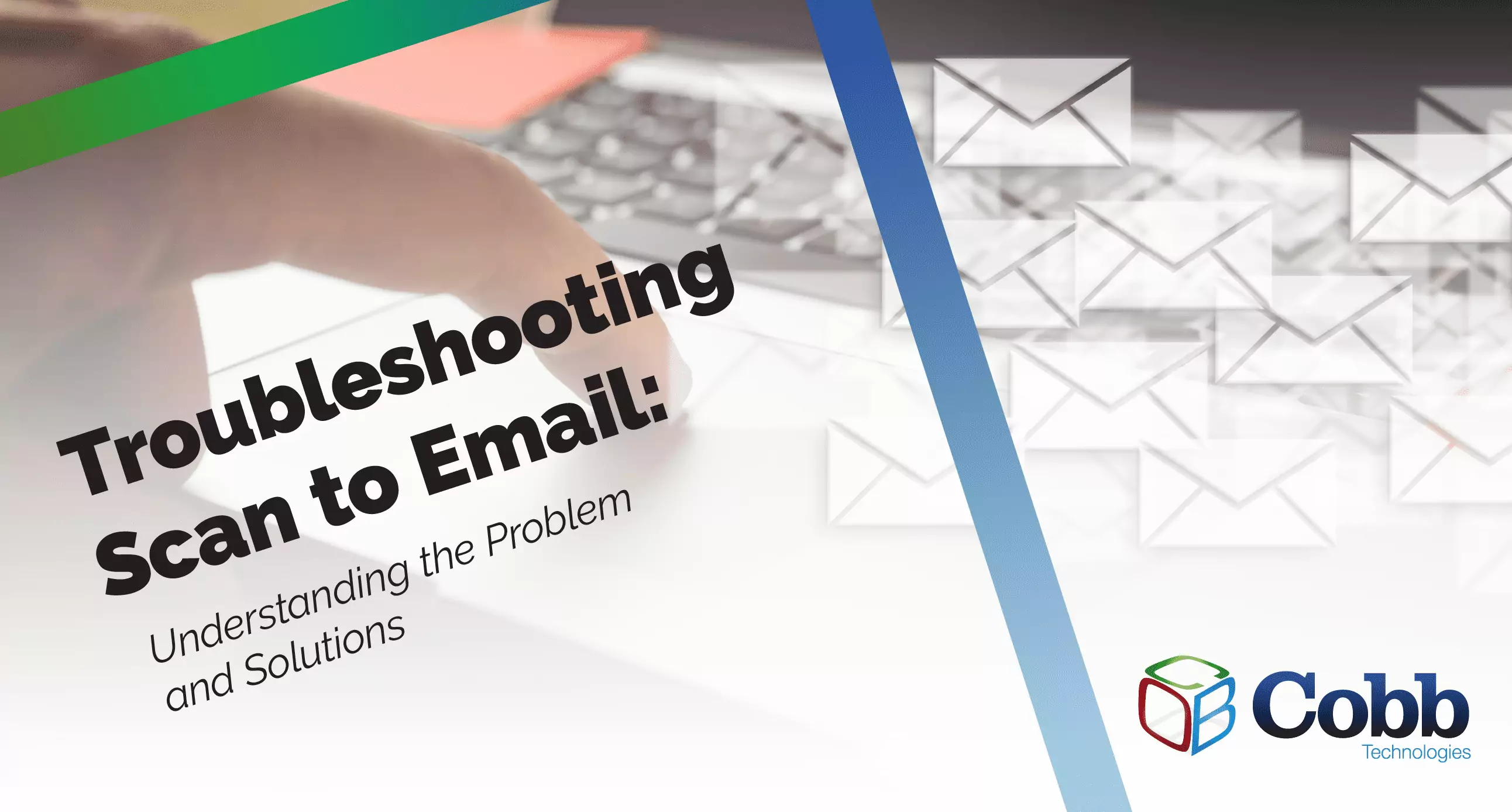9 min read
Sustainable Printing: The Impact of ENERGY STAR Imaging Equipment
Sustainability has become a top priority for businesses looking to minimize their environmental impact while maximizing efficiency. Yet, as...

“The new normal.” It’s a phrase we’ve all been hearing a lot — the problem is, for most of us, this isn’t normal. Staying inside as much as possible, kids on summer vacation in March, and under shelter-in-place orders from states experiencing high numbers of positive cases of COVID-19.
While all of these changes are dramatic, challenging, and stress-inducing, there’s none as daunting as the work-from-home situation we’ve all been forced into.
There are a lot of businesses that weren’t ready for a change as harsh, immediate, and widespread as this — and because of that, too many employees of those companies are struggling to effectively communicate, produce, and most importantly — keep cash flowing.
That’s why we’re releasing this guide; to give you a roadmap for getting your business operating at full capacity once again, all while remaining remote and healthy.
Links to all blogs in the Work From Home series:
How Much Does it Cost to Use Slack and Microsoft Teams?
Collaboration Software Problems
Slack vs. Microsoft Teams - Which Offers More Functionality
What’s the Best Collaboration Platform?
What’s the Best VoIP Platform?
File Sharing and eSignature Software - How Much Do They Cost?
File Sharing and eSignature Software Problems
What’s the Best File Sharing Software?
How Much Does KVM Software Cost?
What’s Better - A VPN, or KVM Software?
Which Costs More - Cloud or On-Premise?
Who is the Best Cloud Provider?
How Much Does Project Management Software Cost?
What’s the Best Project Management Software?
What’s the Best Method of Remotely Connecting With My Clients?
WHAT YOU NEED TO EFFECTIVELY COMMUNICATE FROM HOME
Team collaboration services
Perhaps the most important tool in your work-from-home tool belt is a comprehensive instant messaging service — think Microsoft Teams, or Slack. While email may have served you well in the past, the fact of the matter is that it won’t be fast enough to replace the communication that used to take place verbally in the office — and speed is key.
VoIP (Voice over IP)
While having a service like Microsoft Teams (which gives you the ability to message, video call, host virtual meetings, record those meetings, and share files) is important, you’ll need the ability to receive and place work-related calls through your phone. The easiest way to achieve this capability is the use of a VoIP service like Konica Minolta’s All Covered, MAXvoice, Intulse, or Aircall. There are plenty of VoIP services out there — so make sure you do the research to find out which VoIP service works for you.
E-signature software
Lastly, in order to close deals with clients and customers, you’ll need a service that gives you the ability to share and remotely sign contracts — e-signature services like PandaDoc, Conga, and DocuSign provide this capability — and as the remote work situation continues, e-signature services will be the only reliable way to receive signatures from clients.
WHAT YOU NEED TO EFFECTIVELY PRODUCE FROM HOME
Whether you’re in sales, accounting, marketing, IT, or any other department in your business, you’ll need the ability to remotely and effectively manage two integral aspects of your operations: files, and tasks.
File-sharing services
There are plenty of file-sharing services on the market; Google Drive, Microsoft Sharepoint, DropBox, and a whole host of cloud-based server services. If your business has a physical server on premises, and you need to access files stored in that server, you can achieve this using one of two methods: VPNs (Virtual Private Networks), and KVM (Keyboard, video, and mouse) software.
VPNs
VPNs turn a public connection through your home’s wifi into a private connection, essentially granting you the ability to pass data freely and securely between your work device at home and your business’ server. Provided a fast enough internet connection, you won’t notice any difference between accessing a file from home, versus when you were in the office.
KVM software
KVM software is useful for when you don’t have the ability to use a VPN — essentially, KVM software turns your work-from-home device into a remote control that can interact with the computer you use at the office. This is a fantastic solution for when your device at the office is unable to come home with you. Because your wi-fi is only passing clicks, keystrokes, and video data between your home and business’ networks, your data is secure. An easily usable KVM software is LogMeIn.
Visit our blog for more information about securing your home’s network.
Cloud servers
If you don’t have a localized server for your business, and you need one, your best option for remote set-up is through cloud services such as Google Cloud, Microsoft Azure, or AWS. This will provide you with all of the capabilities of a regular server, but with the added benefit of not requiring any physical installation.
Cloud-based document management
While incredibly important, there’s a lot more to file management than just accessing files securely. Having the ability to remotely manage and automate content is key to success in today’s new normal.
Through cloud-based document management platforms, you can share, edit, store, and organize files, giving employees at your company the ability to all work together, all while in a remote situation. Solutions such as M-Files, Box, and Google Docs will provide these functionalities.
Cloud-based CRM
Cloud based CRM (Customer Relationship Management) software will be necessary to keep track of your funnels during this remote work situation. Services such as Zoho, Salesforce, Zendesk, Hubspot, and M-Files are all solutions that can provide you with the necessary tools to keep track of who’s who, important information about the contact, and measure their engagement with your company and content.
Collaborative project management
Managing documents and funnels is incredibly important to the continued success of your company, but so too is project management. In order to facilitate an environment of both collaboration and accountability, you’ll want to use a project management solution such as Trello, Confluence, or Monday — there are many more, so it’s important to do some research in order to find out what will work best for you and your team.
WHAT YOU NEED TO EFFECTIVELY REACH CUSTOMERS AND CLIENTS
The new normal means no more in-person communication. Due to this, every business needs to immediately adopt a content-based customer acquisition strategy. And because every business (the ones that still want to bring in customers, at least) will be releasing content, it’s important that you carefully manage your content, host your content using a service that allows for the integration of analytics, and create compelling content that speaks to the current needs of customers.
Blogs
First, you’ll need to find a space for your blog to live, if you don’t already have one. Most website providers will offer some kind of blogging service, so this is a fairly easy step. Then, ask yourself the question; “What questions are my potential customers asking?” Then, answer those questions.
As a bonus, include a call-to-action by using a form-fill, or provide a white paper or case study.
Videos
In-person meetings have been replaced with video for the foreseeable future. Luckily, we live in a day and age where everyone has access to a camera through their smartphone. Every business’ sales team will be reaching out to clients and customers via email, so it’s important to stand out, and simultaneously use a medium of communication that is easily consumable.
Get in the habit of responding to client questions via video, and sending them as embedded attachments into your email — you’ll be surprised by the increase in responses that follow. If you can’t use your smartphone, try a video recording service like Vidyard.
In the same way that you produce written blogs to answer potential customer questions, you’ll also want to use videos. Have members of your sales or service teams record themselves using their smartphone, answering questions that are specific to their skillset or knowledge base. This will help create a familiarity with your customers in a way that written content can’t manage.
Make sure to keep your videos short, concise, and above all, genuine. Don’t use a script — the use of one will be obvious to your audience.
Virtual meeting services
In the same vein, you’ll also want the ability to host meetings with clients over video calls — of which there are many available options, including Skype for Business, Microsoft Teams, Zoom, Webex, and a whole bunch more.
Analytics
In order to understand what content is providing customers with compelling information, you need to be able to measure it. This is easier than you’d expect via the integrations available through Google Analytics, HubSpot, AWS, and others. Your webmaster or MSP will be able to help you with the connection of your desired service and your blog.
Once you’ve connected your analytics service to your blog, you’ll need to pay attention to the right metrics. Don’t get hung up on how many views you attract — pay close attention to metrics like time on page, click-through rate, bounce rate, and pages per session. These measure the amount of engagement your content is receiving, rather than looks. Think about it like a storefront; it doesn’t matter how many people look in your window — what matters is when people enter your store.
WORKING FROM HOME DOESN’T MEAN SLOWING DOWN
Many companies feel as if there’s no way to continue operating at full capacity — whether it’s because they lack the tools needed to properly support a remote work situation, or can’t reach clients in order to do business — or even that it’s too expensive to work from home, and that there will be too many problems that will arise during such an abrupt switch. Even still, a lot of us may just not know the services and platforms available.
If you fall in to any of these categories, then the Ultimate Work From Home Guide is for you. This has just been your roadmap — so make sure to check back every day for answers to each of your questions about the solutions and strategies listed above. This week, we’ll be going over comprehensive messaging services.

9 min read
Sustainability has become a top priority for businesses looking to minimize their environmental impact while maximizing efficiency. Yet, as...

6 min read
If you've recently encountered difficulties with your copier's scan-to-email feature, don’t worry — Your copier isn't malfunctioning; it's likely...

5 min read
Worried about cyberattacks hitting your business? You're not alone. Cyberattacks pose a real danger for businesses of all sizes, and without a solid...